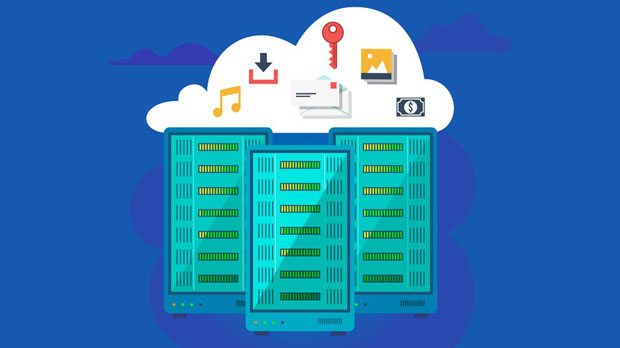In the ever-evolving world of data-driven applications, choosing the right data center server for your needs is crucial. PYPROXY, a leading provider in the field, offers data centers spread across various global regions, each with unique characteristics. These differences can significantly impact your connection speed, latency, and overall performance. In this article, we will analyze the performance of PYPROXY data center servers from different geographical locations, considering factors such as infrastructure quality, regional internet traffic, and environmental factors that influence server performance. Understanding these variables is key for businesses and individuals seeking to optimize their global network performance. Overview of PYPROXY's Global Data Center ServersPYPROXY operates data centers in various parts of the world, each tailored to meet the specific needs of customers in different regions. From North America to Europe, Asia, and Oceania, each region's performance is influenced by local factors such as connectivity infrastructure, average internet speeds, regional policies, and even climate conditions. The aim of this comparison is to help customers understand which regions offer the best performance for their specific needs, whether that be low-latency connections, high bandwidth, or overall stability. North America: A Leader in Server PerformanceNorth American data centers, particularly those located in the United States, are widely recognized for their advanced infrastructure and robust network connections. The United States, being a global tech hub, benefits from a highly developed internet backbone that ensures reliable and fast data transfers. The PYPROXY servers in this region are typically equipped with state-of-the-art hardware and have access to high-speed fiber optic connections. This translates into low latency, minimal packet loss, and overall high performance for applications that require heavy data processing or real-time transactions.However, while North American servers are generally top-tier, the performance can be affected by regional internet congestion, especially in heavily populated urban centers. This can lead to occasional spikes in latency during peak traffic times, although these instances are usually short-lived due to the region’s continuous network improvements.Europe: Strong Connectivity with Regional VariationsEurope boasts a well-established network infrastructure, but the performance of PYPROXY's data center servers can vary significantly depending on the specific location within the continent. Western European countries such as Germany, France, and the United Kingdom typically provide high-performance servers due to their advanced network infrastructure and strong regulatory environment. These regions also benefit from proximity to other major global hubs, ensuring fast data transfers and low-latency connections for businesses operating across Europe and North America.However, Eastern European countries may experience slightly higher latency due to less-developed network infrastructures and longer routing paths. The overall performance of servers in these regions is still relatively good but may not match the consistency found in Western Europe.Asia: Rising Influence with Mixed PerformanceAsia is home to some of the world's most rapidly growing technology sectors, with countries like China, Japan, and Singapore leading the charge in data center infrastructure. PYPROXY's servers in these regions are designed to handle high-demand traffic and ensure efficient data transmission.In particular, Singapore has established itself as a global data center hub, thanks to its strategic location, robust infrastructure, and advanced network capabilities. Data centers in this region offer excellent performance, with fast connections and low latency, especially for customers operating in Southeast Asia or connecting to global networks.On the other hand, countries like China and India present mixed results. While China's rapid infrastructure development has led to improved server performance, the country’s internet policies can sometimes introduce latency issues or slower speeds due to government-imposed restrictions on international data traffic. India, though improving, may also experience inconsistent performance due to challenges in network stability and capacity in certain regions.Oceania: Limited but High-Performance ServersIn Oceania, particularly in Australia, the PYPROXY data center servers are generally high-performing, with a focus on providing solid connectivity to both local and international customers. Australia’s network infrastructure is continuously being upgraded, ensuring that its data centers are competitive on a global scale.However, Oceania faces some challenges when it comes to network speeds and latency due to its geographical location. Although Australian data centers can provide excellent service within the region, the latency for users in more remote areas, or for international connections, may be slightly higher when compared to other regions like North America or Europe. Nonetheless, Australia’s data centers are still considered reliable and efficient for many applications, especially for businesses operating within the Asia-Pacific region.Performance Influencers: Infrastructure, Latency, and RegulationsWhile the geographical location of a data center plays a major role in its performance, several other factors also influence server efficiency. These include:1. Infrastructure Quality: The physical hardware, network backbone, and redundancy systems in place at a data center all contribute to its performance. Well-maintained, cutting-edge infrastructure leads to higher reliability and lower downtime.2. Latency: Latency is a key consideration for applications that rely on real-time data transmission, such as online gaming or financial transactions. A shorter physical distance between the server and the end user typically results in lower latency.3. Government Regulations: Different countries have varying rules concerning data privacy and international traffic. Some regions, like the EU, have strict regulations on data storage and transfer, which can impact server performance and connectivity.4. Traffic Congestion: The level of internet traffic during peak hours can also influence server performance. While most data centers can handle large volumes of traffic, users in highly congested regions may experience intermittent slowdowns.Conclusion: Choosing the Right PYPROXY Data CenterChoosing the right data center server is crucial for optimizing performance and ensuring that your applications run smoothly. Each global region offers distinct advantages and challenges. North America remains a top choice for businesses in need of stable and fast connections, while Europe provides a balanced performance with regional differences. Asia, with its rising technological influence, offers excellent options, especially in Singapore, although some countries face regulatory and latency challenges. Oceania provides a good performance within the region, though international connections may face higher latency.Ultimately, the ideal choice of data center depends on your specific needs, including location, type of application, and performance expectations. By understanding the factors influencing server performance, you can make a more informed decision, ensuring that your digital infrastructure is both efficient and cost-effective.
Nov 11, 2025



































































